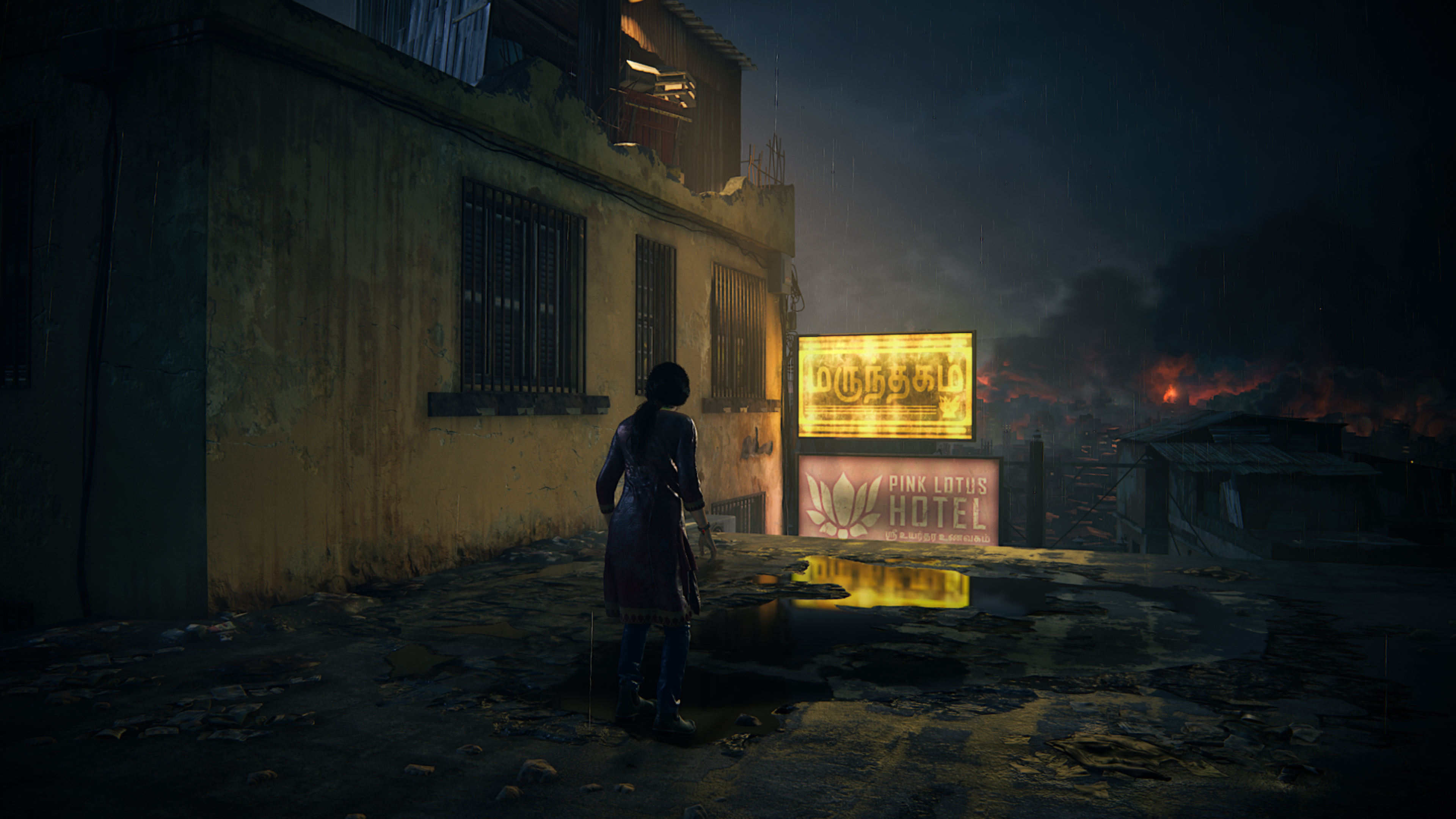Uncharted: Legacy of Thieves Collection is a revelation on PS5
Uncharted: Legacy of Thieves Collection marks the series’ debut on PlayStation 5, bringing to Sony’s newest console the two most recent (and arguably, the two best) entries in the franchise: 2016’s Uncharted 4: A Thief’s End and 2017’s Uncharted: The Lost Legacy. Considering how pedestrian this package seems on the surface — the expected coat of higher-resolution, higher-frame-rate polish and some key quality-of-life improvements, all courtesy of the PS5’s increased horsepower — I find myself surprised at just how much I appreciate its upgrades, and at how much of a difference they make. I’d go so far as to say that one of the new visual modes is a revelation.
Over the past 15 years, developer Naughty Dog has created some of the defining games of the modern action/adventure landscape. Its two franchises during that period, Uncharted and The Last of Us, have set the standard for a certain type of experience within the genre: the largely linear, narrative-driven, cinematic third-person shooter. The studio is also renowned for its technical mastery, with each game making the most of the PlayStation hardware of the moment.
Game development is full of compromises, and the aforementioned circumstances have meant that each of these games has been limited to a frame rate of 30 frames per second at launch. That’s not a problem per se; some would even argue that it makes sense, since Naughty Dog is aiming for a cinematic feel. But it does have consequences for responsiveness, which can be a significant issue in a shooter franchise that also features life-or-death platforming challenges.
Uncharted 4 and The Lost Legacy are not the first Naughty Dog titles to be remastered (or simply upgraded via patch) with a doubled frame rate on a new platform. The Legacy of Thieves Collection, though, marks the first time that any Uncharted game has been playable at a frame rate target of 120 fps. Of course, this mode entails some visual trade-offs: The resolution drops to 1080p. But that was the original resolution for both of these games on the base PS4, and I believe it’s a trade-off worth making.
During many hours with Uncharted 4 and The Lost Legacy on PS5 over the past couple of weeks, the high-frame-rate mode — known as Performance Plus in the settings — became my preferred way to play. The other end of the spectrum is the Fidelity mode, which runs at the original 30 fps frame rate but with the native resolution quadrupled from 1080p to 4K. The third option, Performance mode, is the default setting. It runs at a 60 fps target in a native resolution of 1440p.
The most impressive element of the remastered graphics is that, as far as I can tell, the only sacrifices in image quality as you change modes from Fidelity to Performance to Performance Plus come in the areas of texture quality and shadow definition. Foliage, buildings, people, and shadows will look fuzzier as you turn up the frame rate, but that may simply result from the corresponding decrease in resolution. There’s no difference in lighting, reflections, or even draw distance. Nathan Drake and Chloe Frazer get up to some dizzying vantage points in their respective games, and in every situation, all of the objects and structures in the far-off background remain visible no matter the visual mode selected. It’s remarkable.
If you’re not in the exclusive group of people who happen to own both a PS5 and a 120 Hz/HDMI 2.1 television — I’m lucky enough to have my console hooked up to an LG C1 OLED — I would strongly recommend the Legacy of Thieves Collection’s Performance mode. I don’t have the capacity for detailed frame-rate analysis, but to my eyes, this setting delivers rock-solid 60 fps action while maintaining the level of detail and sharpness that you’d expect from a PS5 game.
:no_upscale()/cdn.vox-cdn.com/uploads/chorus_asset/file/23195921/uncharted_legacy_of_thieves_collection_uc4_italy_performance_3840.jpg)
There’s nothing inherently wrong with the Fidelity mode. It’s obviously the way to go if you just want the highest image quality — although the improvement isn’t a night-and-day difference, even compared to the lowest-quality setting — and of course, these games are totally playable at the same old 30 fps. But after spending the lion’s share of my time in the Performance and Performance Plus modes, the Fidelity mode feels sluggish by comparison.
If you have the capability, the Legacy of Thieves Collection’s Performance Plus mode is too alluring to pass up, due in no small part to the games’ innate visual splendor. With this setting, they look as good on PS5 as they did on PS4 — not markedly better, if at all. Yet the absence of visible graphical upgrades at 1080p is far outweighed by the smoothness and responsiveness provided by playing at 120 fps (or close to it). After all, even if the frame rate isn’t locked at that figure, it’s still somewhere above 60 fps. I noticed only one obvious drop in performance, at the start of the third chapter of The Lost Legacy, which appeared to result from a momentary loading-related hitch. It would help if Sony had added variable refresh rate support to the PS5 by now, but that long-promised update is still missing.
Prior to checking out these remasters, I hadn’t touched the games since the first time I played them on PS4, and I was worried about the atrophy of my combat skills. I was initially dying more often than I thought I should have been, so I looked for adjustments. I then realized that in Performance Plus mode, I needed to use a lighter touch on the sticks to aim accurately; the controls are that much tighter on this setting. Soon, I was nailing headshots left and right. The Uncharted games are not celebrated for their gunplay, but the combat feels terrific at 120 fps — as do the spectacular set-pieces here, such as Uncharted 4’s pell-mell urban chase sequence and The Lost Legacy’s jaw-dropping train finale. Plus, it’s exciting to see these games’ stunning real-time cutscenes running at 60 fps.
All of this is to say nothing of the usability improvements in the Legacy of Thieves Collection. Both Uncharted 4 and The Lost Legacy suffered from agonizingly slow load times on PS4; even in backward compatibility mode on PS5, it routinely takes upwards of 30 seconds to load a save. But whether I’m reloading a checkpoint, restarting after a death, or loading a save, the process is almost instantaneous here. What’s more, switching between the two games at the main menu takes less than 10 seconds.
Speaking of saving: I was glad to be able to pick up right where I left off with my PS4 save files from both games. The Legacy of Thieves Collection can import them natively; you just need to have them stored on your PS5. (While the game immediately detected my Uncharted 4 saves, I had to manually download my Lost Legacy saves from PlayStation Plus cloud storage.)
This is a wonderful feature — neither Uncharted: The Nathan Drake Collection nor The Last of Us Remastered allowed players to import save files from the original PlayStation 3 games — and I’m thrilled that it exists here, especially since it’s unlikely to be available in the Legacy of Thieves Collection’s upcoming Windows PC version. It evinces a certain level of care from Naughty Dog, a welcome acknowledgment of players’ time.
Both newcomers and longtime fans will find a lot to appreciate in Uncharted: Legacy of Thieves Collection, although they won’t find the original games’ serviceable multiplayer component (an omission I don’t mind one bit). This is the definitive way — at least until the PC release, which will presumably support 4K at 60 fps — to play a pair of beloved games that are two of the best at what they do. The package’s upgrades might seem perfunctory on paper, but as ever, the play’s the thing.
Uncharted: Legacy of Thieves Collection will be released Jan. 28 on PlayStation 5; it is scheduled to launch sometime in 2022 on Windows PC. The game was reviewed using a download code provided by Sony Interactive Entertainment. Vox Media has affiliate partnerships. These do not influence editorial content, though Vox Media may earn commissions for products purchased via affiliate links. You can find additional information about Polygon’s ethics policy here.
Share this news on your Fb,Twitter and Whatsapp
Times News Network:Latest News Headlines
Times News Network||Health||



